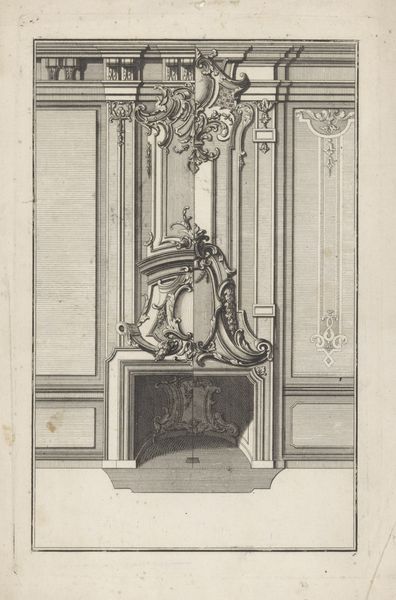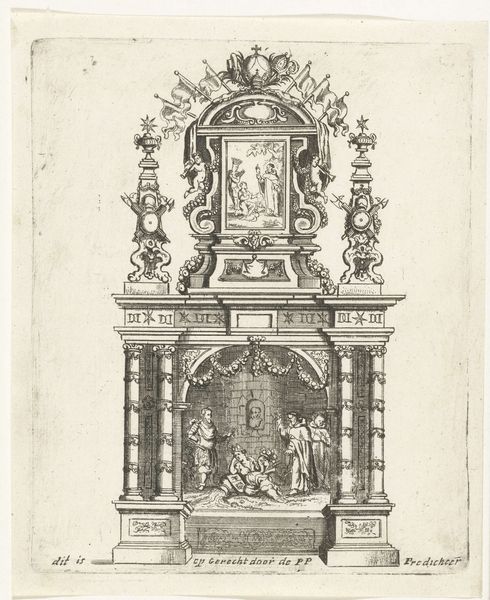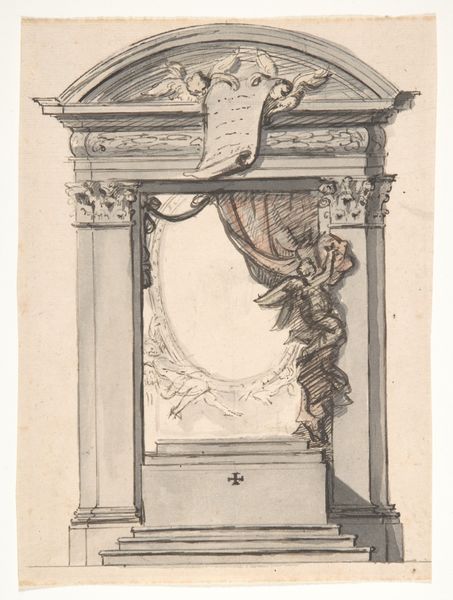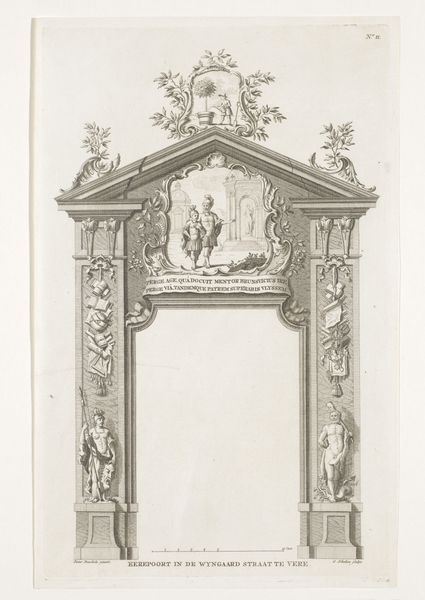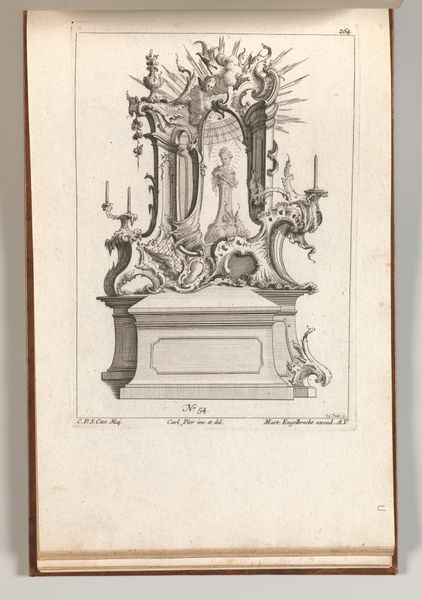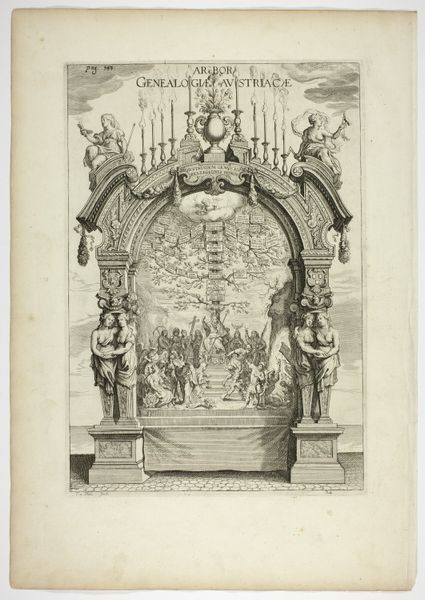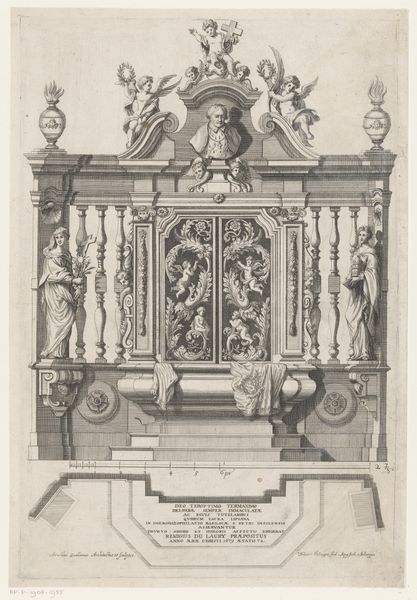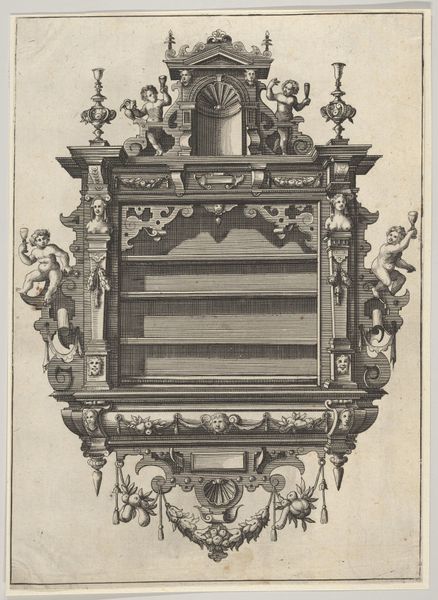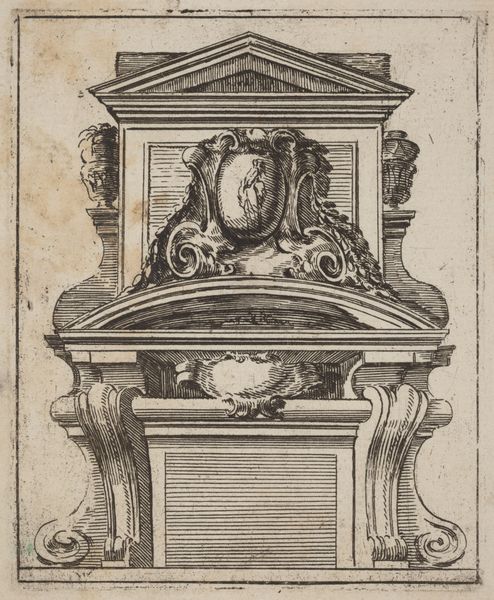
drawing, print, engraving
#
drawing
#
baroque
# print
#
pencil sketch
#
history-painting
#
engraving
Dimensions: Sheet: 20 1/16 in. × 10 in. (51 × 25.4 cm)
Copyright: Public Domain
Curator: This is Giovanni Francesco Grimaldi’s "Catafalque," created between 1626 and 1680. The artwork, currently housed at the Metropolitan Museum of Art, employs engraving and printmaking techniques. It renders a striking example of Baroque-era commemorative design. What are your first impressions? Editor: Strikingly monumental and elaborate. The upward thrust of the composition is really insistent, culminating in that winged figure right at the top. The sheer density of detail seems characteristic of the Baroque, too. Curator: Absolutely. Knowing the function helps decode this visual language. Catafalques were temporary structures, often built for state funerals. Thinking about this as ephemeral architecture made of readily available material shifts our understanding, don't you think? How was labor divided in constructing this for performance and spectacle? Editor: Fascinating! When viewed through a lens of its symbolic language, it's clear the artist has emphasized certain vertical elements to indicate grief and elevate the status of the interred person. The play with scale reinforces that somber mood too. Curator: Yes, but let's also consider its place within the social milieu. It reminds me of how baroque art blurs the lines between artistic disciplines, pulling from sculpture, painting, and architecture, thus democratizing its function to allow for accessibility by the common viewer in their public squares. Editor: You make an important point about art making as intrinsically social and connected. Thinking purely formally, I am intrigued by the artist’s compositional technique, though; in that the implied triangular arrangement supports the structure of this highly intricate design to move your eye upwards through its registers. Curator: Seeing that now illuminates the role this piece could have in shaping collective memory within its community, beyond merely commemorating the deceased. Editor: It is a rewarding intersection of craftsmanship and its immediate setting when viewed in such terms. Curator: Indeed. Looking closer then unveils those broader societal dialogues in an artistic rendering with very defined boundaries and purpose.
Comments
No comments
Be the first to comment and join the conversation on the ultimate creative platform.
